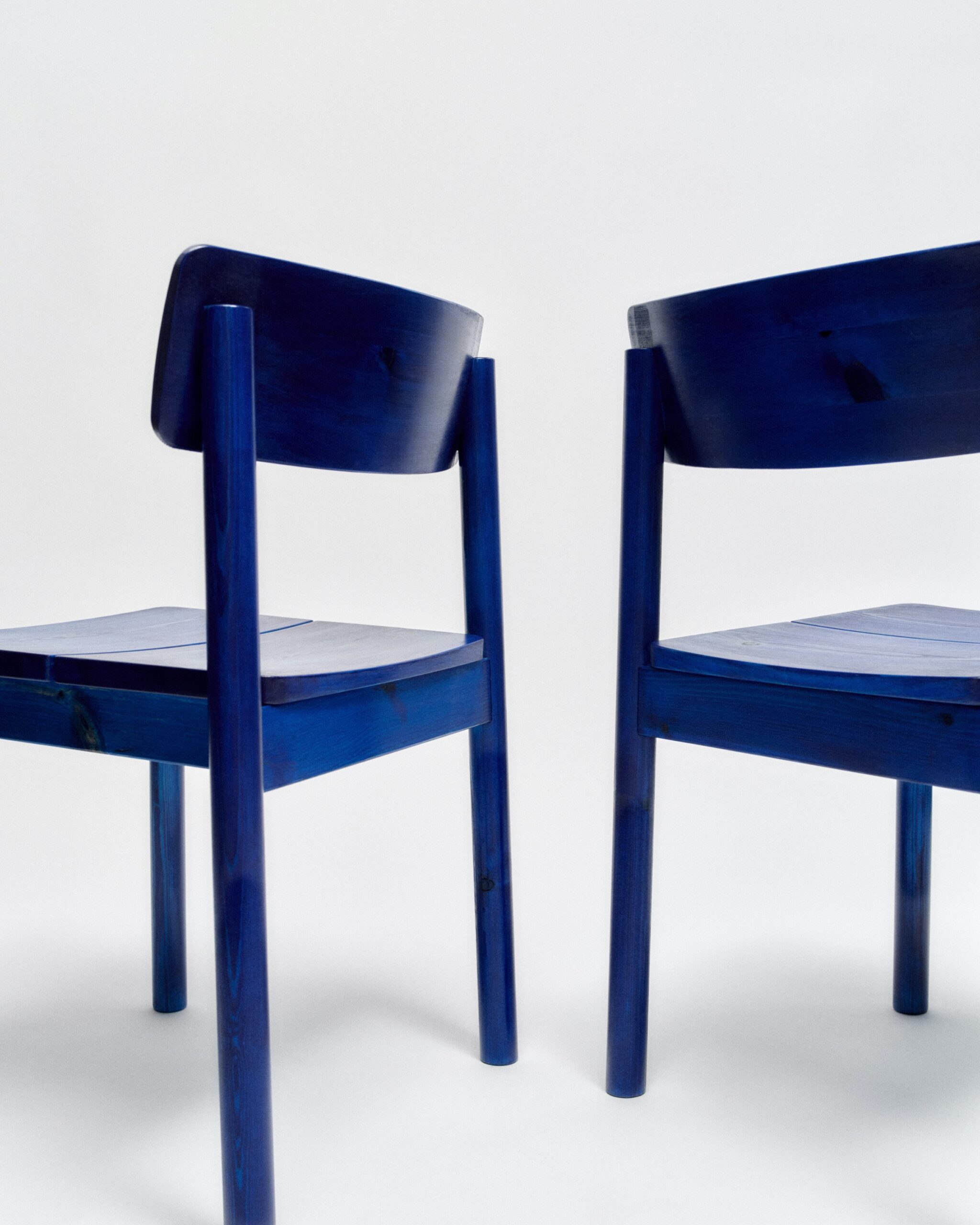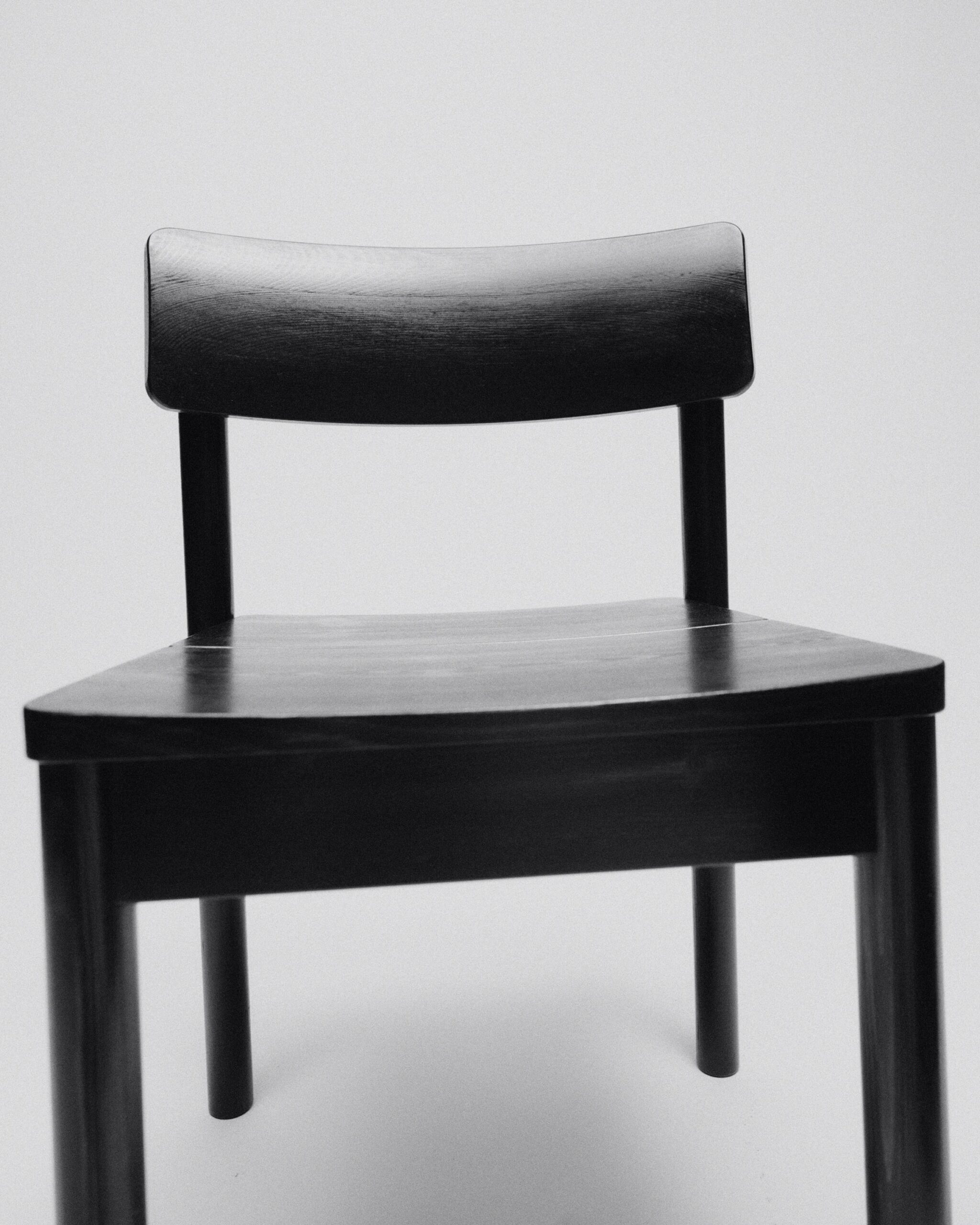Can furniture really be carbon negative? Minus Furniture is a research-driven design studio seeking to explore the reality of a net zero and below zero business model. Roddy Clarke investigates
 Photography by Jenkins Uhnger
Photography by Jenkins Uhnger
Words by Roddy Clarke
I must admit, hearing brands adopt the terms ‘net zero’ or ‘carbon negative’ makes me automatically apprehensive. Maybe this is the cynic within me, or my journalistic approach of wanting to challenge everything I see. However, considering the greenwashing which has plagued industries for far too long, I think it is a sensible hesitation. In discovering Minus Furniture, it is uplifting to see a project centred on transparency which is allowing us to visualise a future where such terms can become a reality.
The Norwegian research-driven studio, set up by Lene and Kristian Notland Harnes, and Erik Aldner, is seeking to disrupt the furniture world after showcasing its first collection at the recent biennial Designers’ Saturday event in Oslo. With the collection designed by local studio Jenkins&Uhnger, it featured a stool, bench, and table as well as the Minus Chair. Locally manufactured from solid pine, the chair’s modest aesthetic is unassuming, despite a meticulously detailed design process.
Large cylindrical legs enhance its durability while the oversized silhouette allows for ease of repair if dented or scratched. And, with a seat comprising two standard- sized planks, and a simple curved backrest adding comfort, its simplistic form requires minimal machining. ‘We chose not to be loud visually as it is hard to predict what future trends will be aesthetically,’ states Sverre Uhnger, whose focus was to design with a 100-year perspective. ‘So, we focused on its application and function to ensure maximum longevity while making the process as efficient as we could.’
 Photography by Bastian Achard
Photography by Bastian Achard
After two years of research, the designs are now available to purchase for the first time, with a trial subscription model currently available to select commercial clients. Another example of the studio’s radical, future-focused approach, the subscription offering takes responsibility of each design once its first life has come to an end. The studio proposes to take back the chair to recycle, repurpose or rehome it, contributing even further towards its ‘net-zero’ potential. However, with subscription prices reducing every three years, it presents an incentive for clients to keep the furniture for longer.
In also adopting a decentralised manufacturing approach, the team is paying close attention to the materials it uses. ‘In the creation of many wooden products today, only around 50% of the tree is used while the remainder is burned as biofuel which releases carbon back into the atmosphere,’ Notland Harnes reveals as he explains how they intend to work with local manufacturers across the world. ‘By optimising the value chain in this way, we can have more control in better utilising our natural resources while simultaneously removing the logistical footprint.’
Minus sources its timber from forests where trees of all ages exist and where consideration is paid to what, where and how often they are taken down. ‘For a healthy ecosystem to thrive we have to ensure we harvest in small quantities and in a manner that gives back more than it takes,’ he continues. ‘The forests we work with not only allow for new growth and regeneration but also for biodiversity where varieties of plant and animal life can contribute towards a flourishing bionetwork.’
 Photography by Bastian Achard
Photography by Bastian Achard
Since the project’s inception nearly two years ago, Notland Harnes alludes to his optimistic growth plans. ‘To have 100,000 Minus Chairs on the market would create a huge shift within the industry,’ he comments. ‘We are excited to see what opportunities the buying and rental services bring. Our ambition is to do the best we can and to continue improving so in building a regenerative business model, we can lead by example. In theory, to achieve negative carbon accounting isn’t difficult but to maintain integrity is.’
This humble yet honest approach is prevalent across the company. From its design aesthetic to the respect for the resources, Minus Furniture is built on a foundation of transparency and passion. And this is just the beginning. New materials such as recycled metal, bio foams and pure wool are resources we can expect the studio to be turning their hands to soon, allowing for a wider scope of impact across the design world.
But for now, it fills me with hope that a healthier balance can be restored: a future where the products made from an 80-year-old tree can outlast its time of growth. I look forward to a world where ‘net zero’ and ‘carbon negative’ move from fanciful terms to inherent, tangible, and standard business principles – such as is the case at Minus Furniture.
